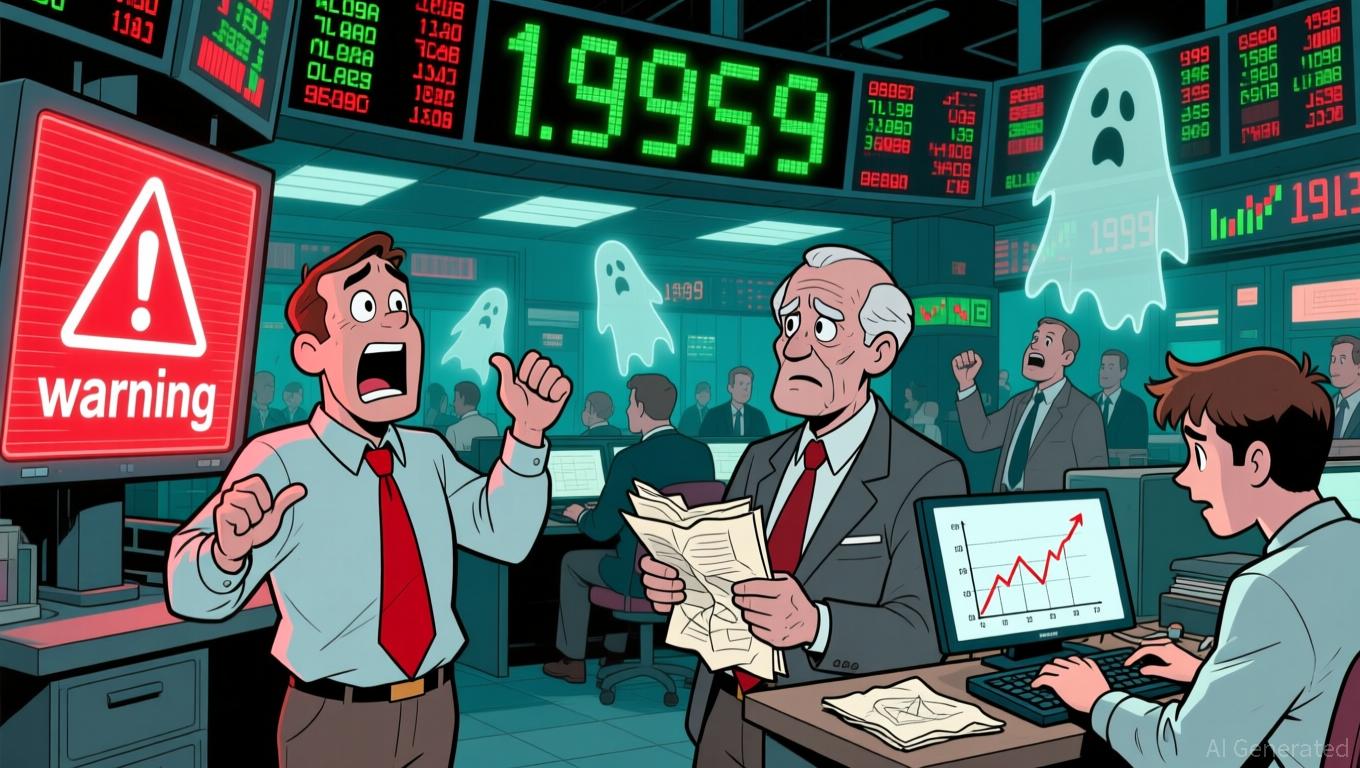Fed’s QE Strategy: Could AI Mania Lead to a Repeat of the 1999 Bubble?
- Billionaire Ray Dalio warns Fed's shift to QE risks inflating an AI-driven bubble akin to 1999's dot-com crash. - He criticizes reinvesting MBS proceeds into Treasury bills as monetizing debt while cutting rates amid large fiscal deficits. - Analysts highlight risks of reduced T-bill supply, lower yields, and repo market strains from Fed's $15B/month Treasury demand. - AI sector valuations and corporate earnings will test Dalio's concerns as November inflation data and PMI reports approach.
Billionaire investor Ray Dalio has sounded a serious alarm regarding the Federal Reserve’s latest policy direction, cautioning that its shift away from quantitative tightening (QT) toward a version of quantitative easing (QE) could fuel a speculative bubble similar to the late 1990s dot-com surge, as reported by a
The central bank’s recent decision to end its QT initiative and keep its balance sheet steady has sparked concerns about potential market instability, according to a

The next few weeks will put these perspectives to the test. Investors are monitoring November’s inflation numbers and manufacturing PMI data for hints about the Fed’s future policy decisions, as indicated by the
Disclaimer: The content of this article solely reflects the author's opinion and does not represent the platform in any capacity. This article is not intended to serve as a reference for making investment decisions.
You may also like
Bitcoin Updates: Growing Popularity of Stablecoins in Developing Economies Poses Challenges to Bitcoin’s Price Prospects
- Cathie Wood lowers Bitcoin's 2030 price target to $1.2M, citing stablecoins' dominance in emerging markets as a key factor. - Stablecoins like USDT/USDC now serve as primary payment tools in hyperinflationary regions, reshaping crypto's financial role. - Institutional forecasts adjust downward (Galaxy to $120K, JPMorgan at $170K) as stablecoins siphon $300B from traditional banking systems. - Venezuela, Argentina show stablecoins' adoption for cross-border transactions, with potential $1T extraction from

Zcash News Today: Zcash Bulls Surpass Shorts with $16M Profit Compared to $14.5M Deficit
- Zcash (ZEC) saw $16. 3M long gains vs. $14.5M short losses on Nov 7 amid 15% price surge. - Technical indicators show ZEC above key moving averages with RSI near overbought levels. - Market diverges from BTC/ETH ETF outflows as ZEC gains traction against macroeconomic headwinds. - Risks persist with open $14.5M short position and volatility threatening sustainability.

Supreme Court Weighs Trump’s Authority on Tariffs in Major Constitutional Dispute
- Trump admits U.S. consumers bear tariff costs, reversing prior claims foreign nations pay, as Supreme Court reviews IEEPA-based tariffs. - Businesses and states challenge tariffs as unconstitutional, arguing IEEPA doesn't authorize executive-imposed duties under the foreign commerce clause. - Courts have ruled against Trump's tariffs, but the administration plans to use alternative statutes like Section 232 to maintain trade policies if IEEPA is struck down. - Legal experts warn a IEEPA victory could ena

Vitalik Buterin's Newest ZK Breakthrough Triggers Fluctuations in the Crypto Market
- Vitalik Buterin's GKR protocol revolutionizes ZK proofs by reducing verification costs and hardware needs, enabling Ethereum's 2025 scalability goals. - ZK-based projects like ZKsync surged 150% in 2025 as Buterin endorsed upgrades achieving 15,000 TPS and near-zero gas fees. - Institutional adoption grows with Citibank and Deutsche Bank using ZKsync's Prividium, while Starknet and zkSync compete on throughput efficiency. - Investors prioritize ZK projects with strong GKR integration, ecosystem adoption,
